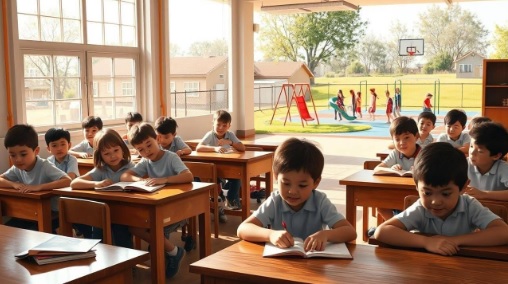| (Mains, General Studies Paper- 2: Topics related to development and management of social sector/services relating to health, education, human resources) |
Reference
According to data collected under the National Sample Survey (NSS), Indian families spend different amounts on education for their daughters and sons.

Educational Status of Girls in India
- Despite a recent drop in the World Economic Forum’s gender inequality ranking, India has made steady progress in enrolment of girls in school in recent years.
- According to government data, girls constitute 48% of the school students. In higher education too, the gross enrolment ratio of females is slightly higher than that of males.
Gender Gap in Educational Expenditure
NSS The recent report of the Comprehensive Modular Survey on Education under the NITI Aayog shows that per student expenditure on girls is lower than that on boys across all stages of schooling, from pre-primary to higher secondary, and across the rural-urban divide.
Status in rural and urban areas
- Households in rural India spend 18% more on boys than on girls in terms of course fees, textbooks, stationery, uniforms and commuting to school.
- Per student expenditure on girls in urban India was ₹2,791 less than that on boys. By the time students reach higher secondary school in urban India, boys are spending about 30% more on education than girls.
Status of expenditure on various components
- Households across the country pay an average of 21.5% more on fees for boys than girls.
- This prioritisation of boy education is also evident in the type of schools Indian families choose for their children.
- About 58.4% of girls are enrolled in government schools, where course fees are often free, and only 29.5% of them have access to more expensive private schooling.
- However, 34% of boys are enrolled in private unaided schools.
- This gap extends beyond school classes to private tuition, which many families consider essential for quality education.
- Overall, 26% of girls, while 27.8% of boys, are enrolled in such classes.
- By the higher secondary level, families are spending an average of 22% more on tuition fees for boys than girls.
State-wise situation
- There is wide variation across states in terms of gender gap in education. For example, the largest gap in enrolment of girls and boys in government schools versus private schools can be seen in states/UTs like Delhi.
- Where about 54% of boys go to government schools while more than 65% of girls go to government schools.
- On the other hand, about 38.8% of boys go to more expensive private schools while only 26.6% of girls can afford it.
- Gender gap is more than 10% in Madhya Pradesh, Rajasthan and Punjab too. In Gujarat, the gender gap is significant in urban areas but less in rural areas.
Special performance of Southern and North-Eastern States
- In states like Tamil Nadu and Kerala, boys and girls go to government and private schools in almost equal proportion.
- In many North-Eastern states, the scenario is reversed and more girls go to private schools.
Difference in expenditure
- In higher secondary education, households in Telangana, Tamil Nadu and West Bengal spend much more on boys than on girls. However, they spend more on girls at the secondary level.
- States such as Andhra Pradesh, Himachal Pradesh and Kerala also spend more on girls at the higher secondary level. The data show that this is particularly true in urban India as transport costs become a major factor.
- Bihar, Jharkhand, Rajasthan and Tamil Nadu are among the other states where the gender gap is quite high in this regard.
Challenges
- Low funding for government schools leads to inadequate infrastructure, shortage of teachers and poor learning outcomes.
- Inequalities exist between urban and rural areas and between government and private schools.
- Greater dependence on families for private expenditure hinders education.
Impacts
- Negative impact on access to quality education, nutrition (through mid-day meals) and learning levels
- Impediment in achieving Sustainable Development Goal-4 (quality education) and Sustainable Development Goal-5 (gender equality)
- Direct link to human capital formation and India’s demographic dividend
Way forward
- Increase education expenditure to 6% of GDP as per the target of National Education Policy (NEP) 2020
- Ensure efficient use of funds with transparency and accountability
- Focus on school infrastructure, digital learning, teacher capacity and equity
- Strengthen early childhood education (Anganwadi + pre-primary) for long-term impact



